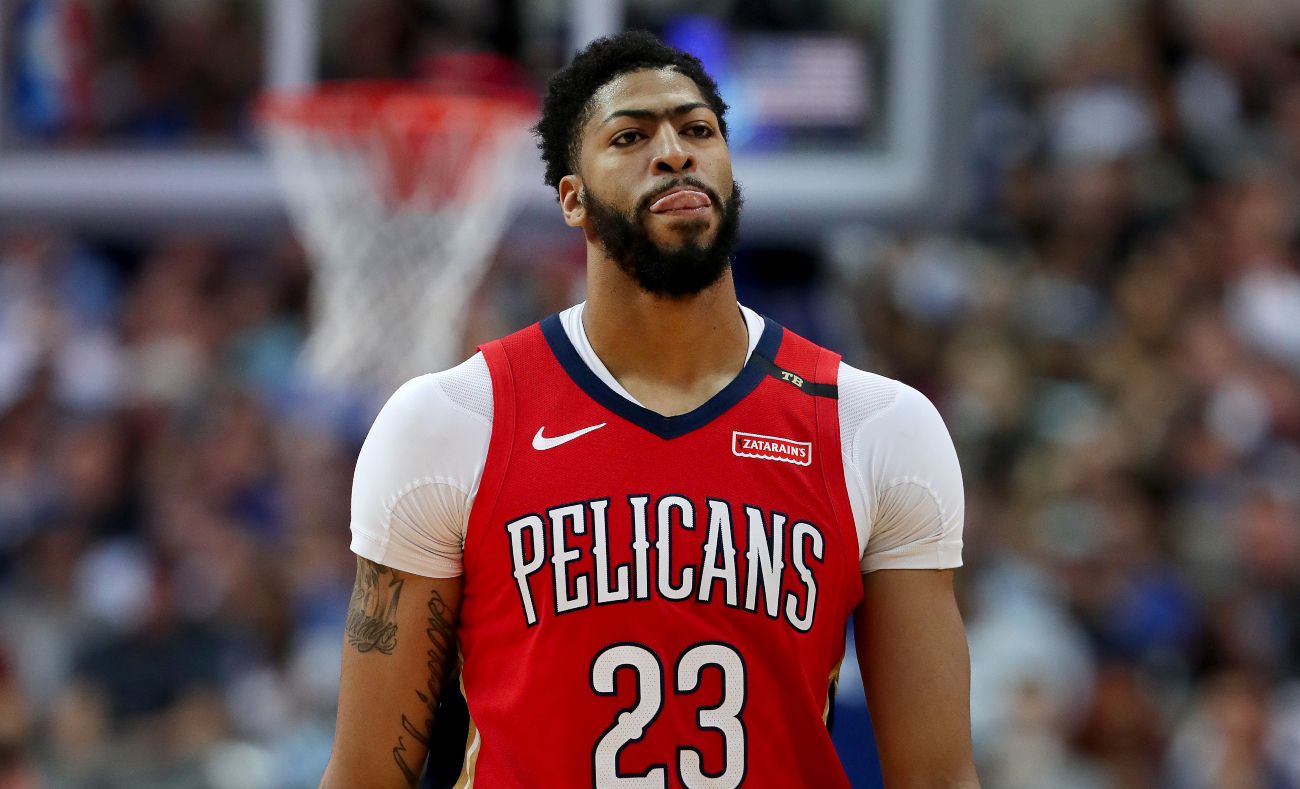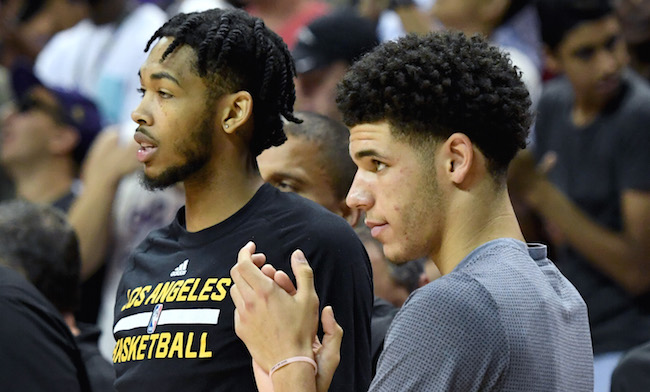
The Anthony Davis trade is, barring something unforeseen, done. Davis saw his long-desired wish come true and will team up with LeBron James as a member of the Los Angeles Lakers. It cost Los Angeles a pretty penny, as the team had to blow the New Orleans Pelicans away to make the deal come to fruition. In their eyes, though, it’s all worth it, because the second superstar they so coveted is now in Tinseltown.
For the Pelicans, they managed to get quite a haul back for someone who would have left the team in 12 months: Lonzo Ball, Josh Hart, Brandon Ingram, the No. 4 pick in the 2019 NBA Draft (which very well might end up getting moved), and additional selections in future drafts. With no Jayson Tatum on the table, you can argue this was the best return David Griffin and company could have gotten.
This is a bit of a weird deal in that the Pelicans did not get a star back for Davis. No one they acquired, you can argue, will ever be an All-Star. Ball, Hart, and Ingram are all nice, young players, and Ball and Ingram are young enough that they can still improve, but their games have holes that lead to legitimate concerns about whether they’ll live up to where they were selected in their respective drafts.
Here’s the thing: All of this is totally fine. Even forgetting the draft picks — which, as we learned on Saturday night, is objectively a stunning price the Lakers had to pay — the Pelicans decided to use Davis to acquire players who fill out their roster. As opposed to looking for a deal like the one the Spurs made in exchange for Kawhi Leonard that netted them DeMar DeRozan, who could help them stay in the playoff hunt, Griffin decided to build.

The new front office in New Orleans ostensibly surveyed its roster and spotted some glaring issues. Davis, obviously, would leave in a trade. Two crucial role players from last season, Julius Randle and Elfrid Payton, are in line to become unrestricted free agents. Payton will hit the market, while Randle has a player option worth $9 million and stands to make more after a productive 2018-19 campaign. Jrue Holiday remains and E’Twaun Moore is a very solid rotation player, but otherwise, there just isn’t a ton of depth.
Griffin noticed this, and in addition to a potential treasure trove of first-round picks, decided to construct a roster around the team’s newest star: Zion Williamson. Yes, Williamson won’t become a Pelican for a few more days. Yes, banking on a rookie to turn into a star is risky. No, this does not matter. When projecting out what the team is going to look like for the next seven years or so, the assumption is that Williamson is going to be the team’s alpha dog. Why not make a basketball team while operating under this assumption?
As such, the Pelicans believe they have, at minimum, a potential superstar in Williamson, a really good veteran presence in Holiday, two young dudes with considerable upside in Ball and Ingram, and a pair of very solid bench options in Hart and Moore. In terms of the players we know will wear a Pelicans jersey over the next year or three, the trade was not about acquiring a superstar nearly as much as it was about having a core group of player that just did not exist with how the roster was constructed. Beyond that, there will be a steady stream of reinforcements coming into the team thanks to the draft capital the Lakers forked over, meaning young and affordable players can theoretically bring new blood into the franchise somewhat frequently.
There are very obvious concerns that can be answered in free agency or in a potential move involving the No. 4 pick in the NBA Draft. The team is starved for shooting — Moore is a marksman from deep, Ball is horribly inconsistent (and just generally horrible) from deep, and while Ingram, Hart, and Holiday struggled for most of the 2018-19 campaign. (Ingram, it must be said, caught fire during the second half of the year before he was ruled out for the remainder of the season.) There’s also no word on who will play center. Jahlil Okafor is on the roster, but his fit on a team that would be best suited playing at warp speed is less than ideal. Williamson might be able to play center in small ball lineups, but making a 6’7 guy your full-time 5 is a risk, even if he’s built like a brick you-know-what house and can jump to the moon.
But it’s much better to have two holes that can be filled by one or two role players than to have a roster full of holes, something that oftentimes tanked the Pelicans during Davis’ tenure. New Orleans can look to fill some of those in free agency, but also are expected to try and turn the fourth pick this year into a veteran starter that can help raise their floor for the 2019-20 season.
The two schools of thought for successful roster construction are the superteam model, and a model that follows what the Raptors did this past year: Have a star and a whole bunch of really, really good basketball players around them. It’s very much dependent on Williamson being as good as advertised, but the Pelicans used the Davis trade to take the second approach. Time will tell if it works, but based on what we know, we can say with some confidence that the Griffin era in New Orleans is off to a good start.






